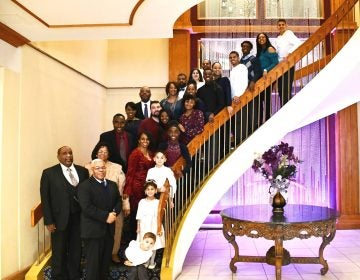Is your boss spying on you while you work remotely?
The pandemic has accelerated a disconcerting trend: Workplace-surveillance software.
Listen 6:57
The pandemic has accelerated a disconcerting trend: Workplace-surveillance software. (Alphavector / Big Stock Photo)
This story is from The Pulse, a weekly health and science podcast.
Subscribe on Apple Podcasts, Stitcher or wherever you get your podcasts.
When Bennett Cyphers, a staff technologist at the Electronic Frontier Foundation, started researching what he calls “bossware” — that’s software for monitoring workers — one thing in particular really started to creep him out: the way companies that make this software market the product.
“They’ll just come out and say, ‘Oh, do you want to get your employees’ private, social media passwords? We can help.’ It’s like…what? There’s a whole world that we sort of stumbled into,” Cyphers said.
The world he stumbled into is part of a growing trend of workplace surveillance, which has been inching into our work lives for years and is getting a push forward by the coronavirus pandemic. Companies that sell “bossware” boast an impressive range of clients, from large corporations like Verizon and Allstate to universities like Emory University and cities like Denver.
The “bossware” Bennett looked into functions a lot like spyware. It lives in the background of your computer, is difficult to detect, and monitors everything — from your keystrokes and mouse clicks to what’s on your computer screen. It’s often installed on work laptops and computers, but sometimes employees are asked to download it on personal devices as well.
Unlike spyware, the software isn’t supposed to be used for malicious purposes. Generally, it tracks certain information and sends all that data to a manager or an IT department. It’s advertised as a way to “fight inefficiency” and “see work happen in real time.”
Some of this monitoring software captures a log of every application and website employees use, some of it gives minute-by-minute breakdowns of how employees spend their days, and some of it goes beyond that and takes screenshots of their computers or discreetly turns on their cameras and microphones.
“It’s almost as if there’s like a red recording light on, in the corner of your screen on all the time,” Cyphers said.
Many companies that sell the software argue that managers of remote workplaces need this type of technology now.
Reid Blackman, a business ethics consultant, said that clients didn’t used to ask him about employee-monitoring software, but that now they’re worried about workers being less productive at home at the same time revenues are declining.
Blackman said managers do have hesitations about the software and worry it will damage trust or violate privacy, but they often don’t know what else to do.
“And then the worry is that they just get a tool. And then they just deploy it. And there’s not enough talk with managers and employees about what’s being done, why it’s being done, and the role that it’s playing in the assessment of employees,” Blackman said.
Subscribe to The Pulse
In an interview for this story, a worker described his worries about the way his company, a bank in Alabama, has handled monitoring software. He asked to remain anonymous out of fear of punishment from his employer.
Once employees shifted to working from home, he said, managers started thinking of ways to track worker productivity. They landed on an app that automatically records every phone call a worker makes and lets managers listen in in real time.
“It’ll send logs every day with how much time we spend on the phone, how long the average phone call was, what times they were made, the numbers that we call, and all of that,” the bank employee said.
He sees more invasive software, like a keylogger that monitors every word an employee types, as the next step. He said the monitoring — and the fear of more of it — has already taken a toll.
“Now, it’s very much feeling like we’re just a cog here to make the company money, and it’s taking some of the magic out of what we do and why we do it. And I don’t see it being sustainable long-term for a lot of people.”
But workplace surveillance isn’t just part of the future for those who work desk jobs. It’s pervasive now in warehouse jobs and for gig workers like Uber drivers and delivery people.
The potential for tracking everything
Willy Solis lives in a suburb of Dallas, Texas. Since last fall, he’s been a shopper for the grocery delivery service Shipt. He accepts orders on an app, picks up items for customers at a grocery store, and delivers those items to the customers.
When he’s logged onto the app, Solis said, it can track his location — so he’s careful to delete it whenever he’s not out for an order or working.
Even though many on-demand apps, like Uber and Lyft, track workers’ locations, Solis said lately he’s started feeling like worker tracking is expanding. He’s heard from other Shipt workers about the app asking to turn on phone cameras and Shipt workers being watched and reported at grocery stores for things like teaming up with other shoppers.
“It drives paranoia into you for sure. It’s like Big Brother monitoring you when you go into every single store that you go into,” Solis said.
A Shipt spokesperson said that shoppers can adjust the settings on the app, including location sharing and camera access — and that Shipt does not proactively ask retailers to monitor shopper behavior.
It’s hard to do most gig work without submitting to surveillance, though. Julia Ticona, a sociologist and assistant professor of communication at the University of Pennsylvania, researches how workers interact with technology. She said the algorithms that control gig work apps are kind of like overzealous bosses. They track everything about a worker’s shift and performance.
Ticona is already seeing signs that the coronavirus has opened up a brave new world in worker surveillance. For instance, on online caregiving marketplaces, care workers are now asked to monitor and report their temperatures. It’s optional information, but Ticona said it can feel pretty coercive.
“It is kind of framed as, like, another way to brand yourself as being a desirable worker, potentially for a family,” Ticona said.
And the health surveillance reveals a troubling imbalance, according to Ticona: Only workers are asked for it, not employers.
This imbalance is something about our work futures that worries Ali Alkhatib, a data ethics researcher at the University of San Francisco.
“In-person environments might’ve made it easier to look around and see that all of us are being oppressed in certain ways, or that I’m being singled out in certain ways. Technology makes it very easy for a system to sort of put up a wall,” Alkhatib said.
The pandemic has pushed workplace surveillance that might have been seen a decade in the future into our lives now, or over the next few years, Alkhatib said. But the future actually reminds him a lot of the past. When assembly line and factory work started, there was an obsession with tracking how long each task took.
“But it doesn’t necessarily give you any of the things that you set out to get, let’s say, like better output of whatever it is that you’re making.”
Though, according to Alkhatib, there’s a bright side to our past coming back to haunt us sooner than might have been expected. We can start talking about our workplace futures now — what we’re OK with and what we can’t tolerate.
To learn more about the legal limits of employee monitoring software and the rights of employees, go to the Electronic Frontier Foundation’s guide to the software.
WHYY is your source for fact-based, in-depth journalism and information. As a nonprofit organization, we rely on financial support from readers like you. Please give today.






